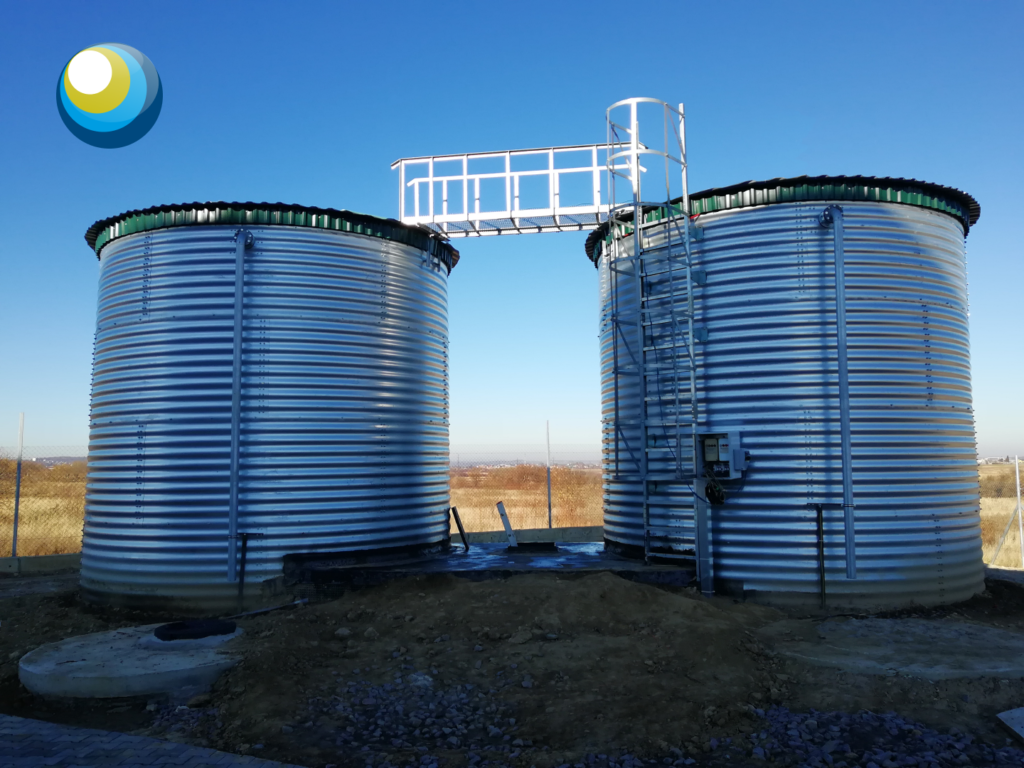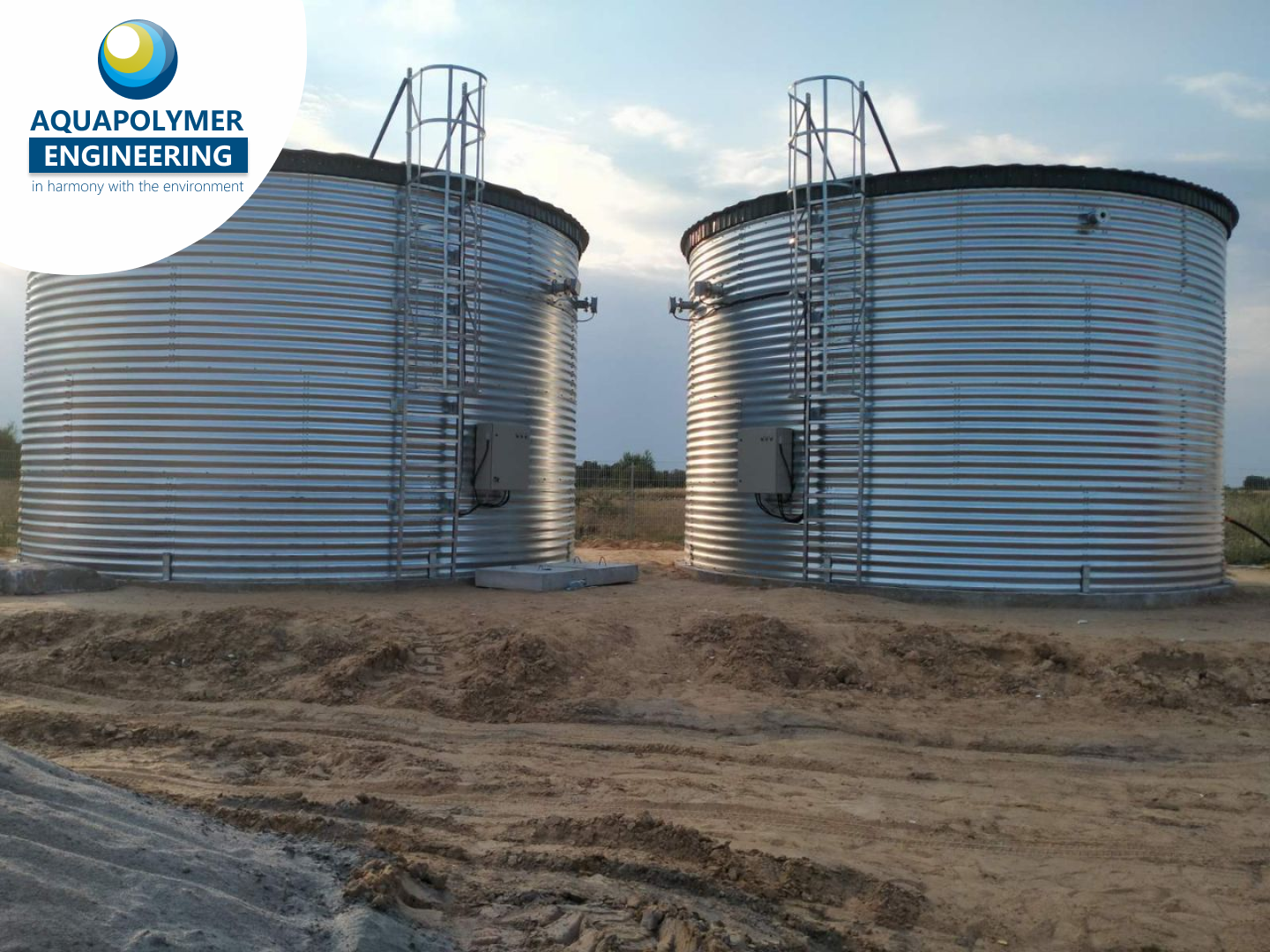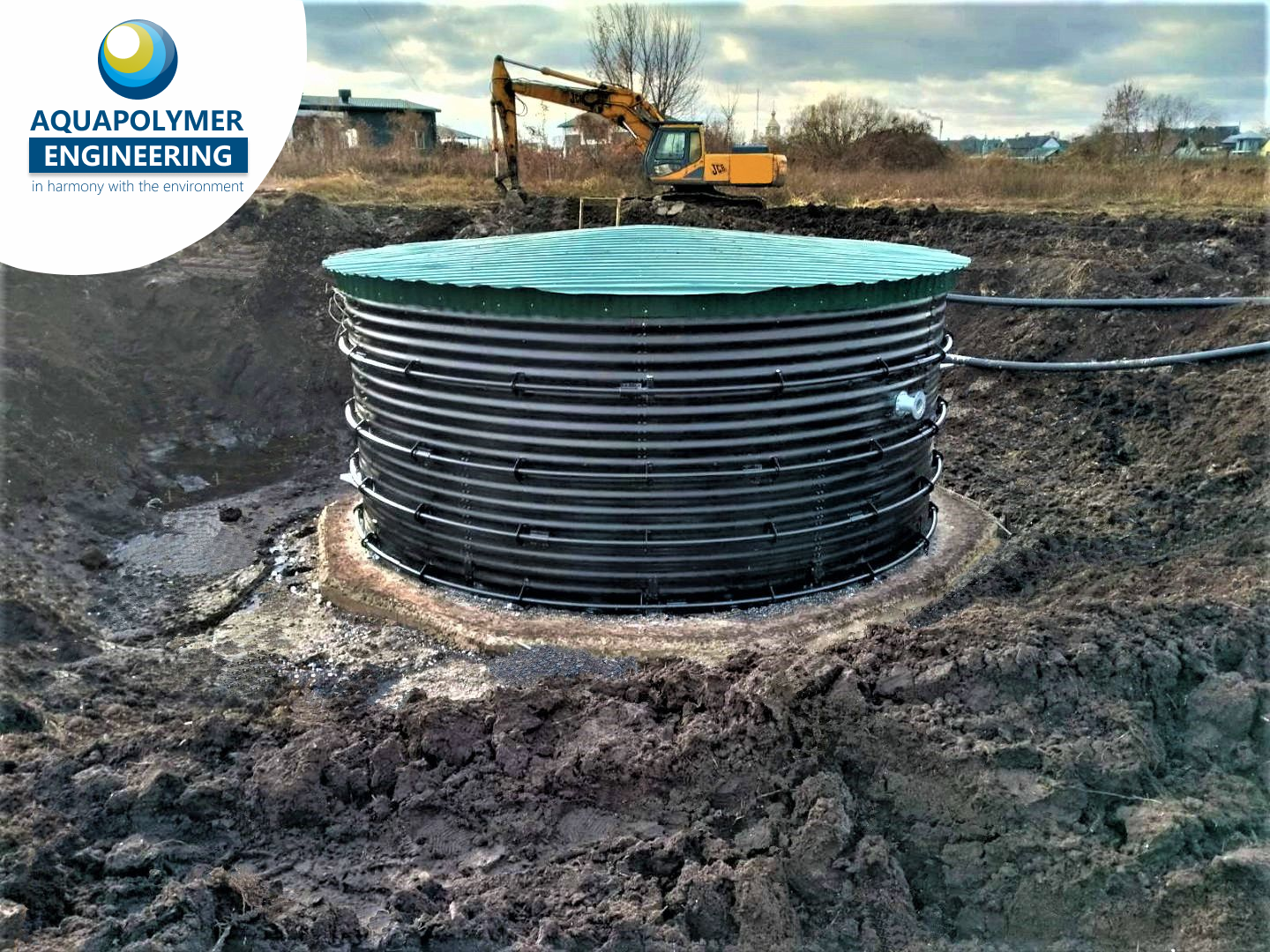The history of fire tanks
The first steel tank was manufactured in USA in 1864. It was not cylindrical, as we are used to, but rectangular. 14 years later, engineer Shukhov designed the first riveted metal tank in the Russian Empire, in which oil was then stored. And it was already cylindrical in shape, due to which it was possible to reduce the consumption of sheet metal for the construction of the tank. In the future, all tanks began to be built as a cylinder, and the scope of application of tanks expanded with the help of the appearance of new materials and engineering solutions.
Nowadays, tanks are an integral element of fire extinguishing systems at large production plants, factories, warehouses and logistics centers, agricultural enterprises and other fire-hazardous objects. The necessary supply of water for localizing fires must be stored in fire tanks.
Types of fire tanks
According to the location option relative to the surface of the ground:
- Underground – usually installed in the conditions of a limited space. Excavation works are planned, which increases the price and increases the installation time of the underground tank. The condition for installing an underground tank is the absence of a high level of groundwater
- Above-ground – these mounted on the ground, so there is no need to carry out earthworks for installation. Due to this, the installation of an above-ground tanks will cost less
According to the type of material used
- Plastic (polyethylene, polypropylene);
- Reinforced conctrete;
- Steel.
According to the type of installation
- Horizontal;
- Vertical(more practical and do not take up much space).
According to the method of manufacture:
- Welded.
- Prefabricated(modular).
The choice of one or another tank is based on the regulatory framework of Fire Security and Specifications, features of the land site, availability of communications, level of groundwater, requirements of insurance companies, features and capacities of the object where the fire safety system is arranged. An important factor when choosing a tank is the price. So, for example, welded steel tanks are significantly more expensive and more difficult to manufacture than prefabricated steel modular structures on removable bolt connections.
Prefabricated modular tanks
Unlike all the above-mentioned tanks, modular tanks have all the advantages of inexpensive, practical, strong and durable tanks:
- unlike welded tanks, modular containers do not have welded joints;
- unlike reinforced concrete structures, modilar tanks can be moved from place to place;
- compact dimensions of the structure in disassembled form for ease of transportation (a large capacity can be transported by one truck);
- the use of specialized construction equipment is not required (the foundation is an ordinary strip);
- high speed of installation work (modular tanks are assembled on a previously prepared strip concrete foundation);
- the possibility of carrying out installation works all year round;
- low cost of the project in contrast to welded and concrete structures;
- large capacity, practicality and versatility in contrast to plastic tanks (modular tanks can be additionally equipped with thermal insulation, water heating systems, if the tank is expected to be used in winter).
The use of vertical prefabricated tanks also allows you to significantly save free space, which is very important for warehouse and production areas. At the same time, the vertical structure must be stable, able to withstand wind and snow loads, as well as seismic underground tremors. For this purpose, modular tanks are securely attached to the foundation with the help of special fasteners that protect the structure against overturning. For better stability, the assembled tanks are deepened into the ground to a depth of about 2.4 meters.
Design features of modular tanks
A standard modular tank is a structure that can be quickly erected, consisting of a galvanized frame, around which corrugated sheets are bolted using a hydraulic jack, forming the rings. The thickness, dimensions and number of sheets are determined by the volume of the tank and the ratio of diameter/height of the structure.
The design calculation of the fire tank should be carried out taking into account the necessary margin of strength, which should be 2:1. For this purpose the corrugated sheet is used for the installation of tanks, which significantly exceeds the strength characteristics of a smooth sheet.
The roof of the fire tank can be made of plastic or steel. The shape of the roof is made in the form of a truncated pyramid, so that snow does not collect on top and does not create a deforming load.
In order to ensure the absolute tightness of the structure, prefabricated fire tanks are equipped with a polypropylene membrane inside.
How to choose the right fire tank
A correctly selected, designed and installed fire tank will provide the necessary supply of water for the automatic fire extinguishing system. When choosing a tank, a number of factors must be taken into account:
- The capacity of the tank must cover the needs of all fire-fighting systems at the facility. Modular tanks can be manufactured in a wide range of volumes: from 15 to 5,000 cubic meters of water.
- Seasonality of operation of the tank – in the case of using a fire tank in winter, it is necessary to provide high-quality thermal insulation of the tank. It is also possible to additionally equip the tank with a water heating system by installing the heating elements. This will prevent freezing of water inside the tank.
- The total number of tanks to be placed on the facility. If space does not allow, it is possible to envisage an underground method of installing a modular tank – this means additional costs for earthworks, the use of special equipment, etc.
- Advantages and disadvantages of a specific structural solution for the tank, which are used to protect the facility against the fires.
Also, an important factor when choosing a tank is the manufacturer and the contractor who will perform the installation.
Order a fire tank in Ukraine
Aquapolymer Engineering company offers for sale modular MakBox tanks with a capacity of up to 5000 m3. These are reliable, verified tanks that have successfully proven themselves in Ukraine and abroad
Contact us, our engineers will select a fire tank of the required volume, diameter and height for your facility. We also provide installation and installation supervision services for modular tanks throughout Ukraine and beyond.





